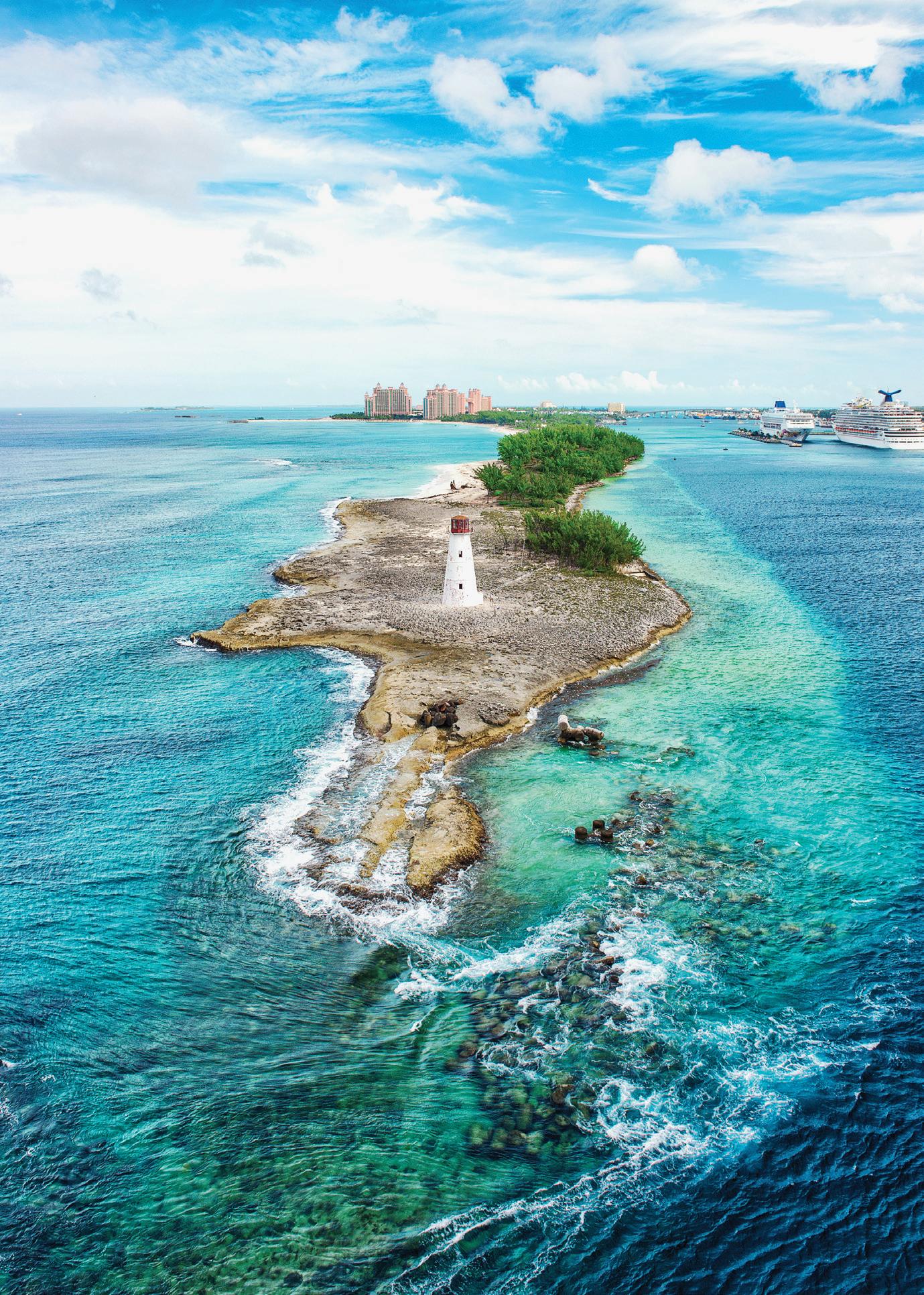
8 minute read
Where Next - A Perfect Day In
from Range - Volume 4
by Ensemble
New Providence
THE BAHAMAS
Prepare to snorkel, souvenir-hunt and sample conch on the Bahamas’ most populous island, home to Nassau, its laid-back capital.
By Caitlin Walsh Miller
“The Bahamas is for beach snobs.” I hear these words a lot while I’m in New Providence, the gateway island to the Bahamian archipelago. And while the phrase may sound like Caribbean swagger, the beaches here have the credentials to back it up.
The powder-white sand is so perfect, Florida wants to import it. The water is such a distinctive shade of turquoise, the islands are easily visible from the International Space Station. And location scouts — professional beach snobs, essentially — have chosen New Providence time and again as the backdrop for movies like Splash, Into the Blue and a bevy of Bond films.
Travelers choose it, too, by the millions, and New Providence is the first port of call for most — literally, for those who alight in Nassau’s brand-new cruise port. A few things to know before you go: It’s peas and rice in these parts, not rice and peas. Plantain is pronounced with the emphasis on the first syllable (like “mountain”); conch, the ubiquitous mollusk, is “conk.” And always travel with a bottle opener — you never know when someone’s going to offer you an ice-cold Bahamian lager called Kalik.
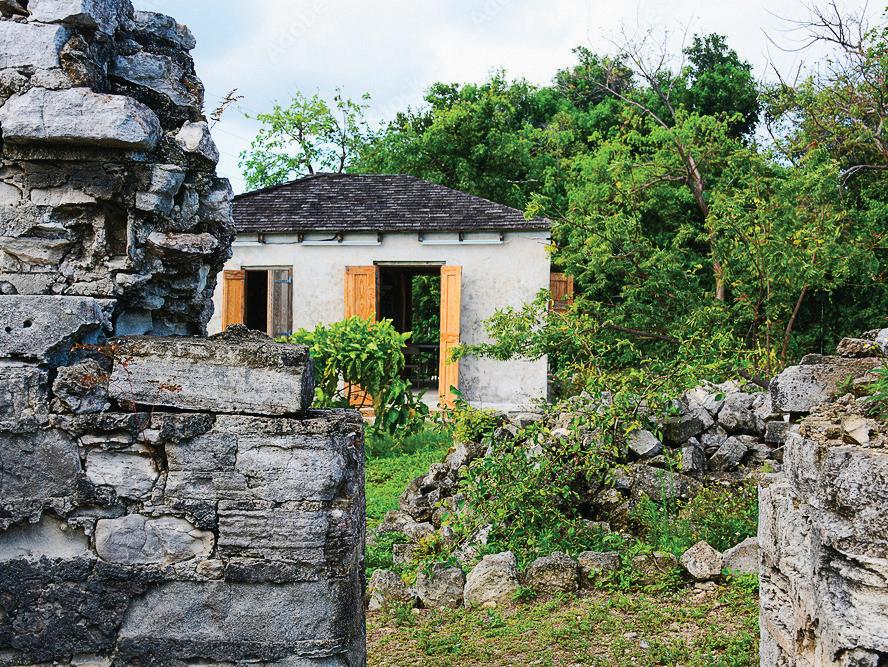
Morning
I’m a beach snob in training, and a local told me his favorite swimming spot is somewhere along the western shore of the island. He wouldn’t say where exactly, but I’m on a mission to find it. Which is why I’m kicking off the day with a trip to Clifton Heritage National Park, a former plantation that sits on 208 acres of wetland beyond the gated communities that occupy much of the western half of New Providence. Guided visits take you through the scrub forest to sites used by the Lucayans, the original inhabitants of the Bahamas, ruins of enslaved Africans’ houses and a stirring contemporary art installation of faceless carvings looking out over the ocean, called Sacred Space
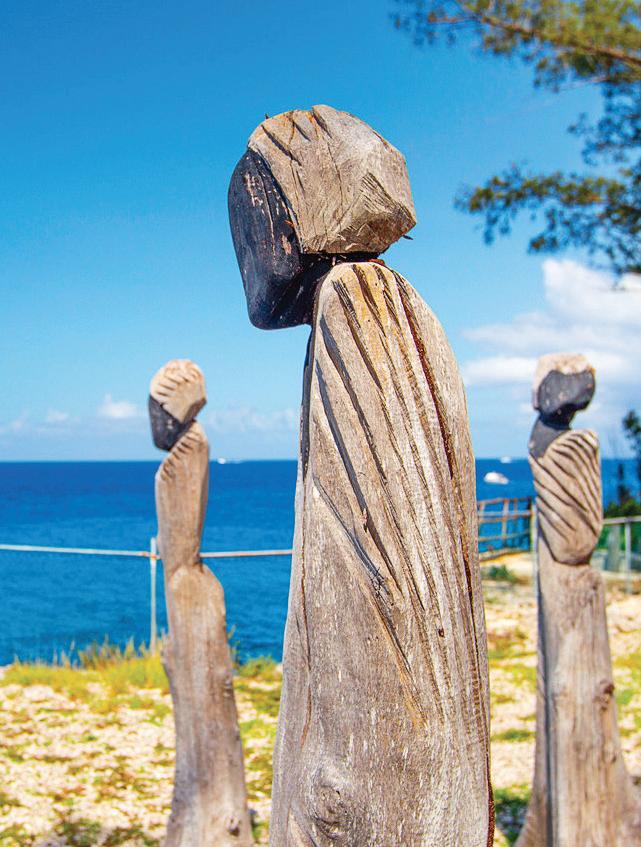
They’re likely looking right over the head of Ocean Atlas, an 18-foot-tall, 66ton statue submerged about 450 feet off the coast. It’s the largest single underwater sculpture in the world, depicting a Bahamian girl carrying the weight of the ocean on her shoulders. It’s a load she’s been charged with since 2014.
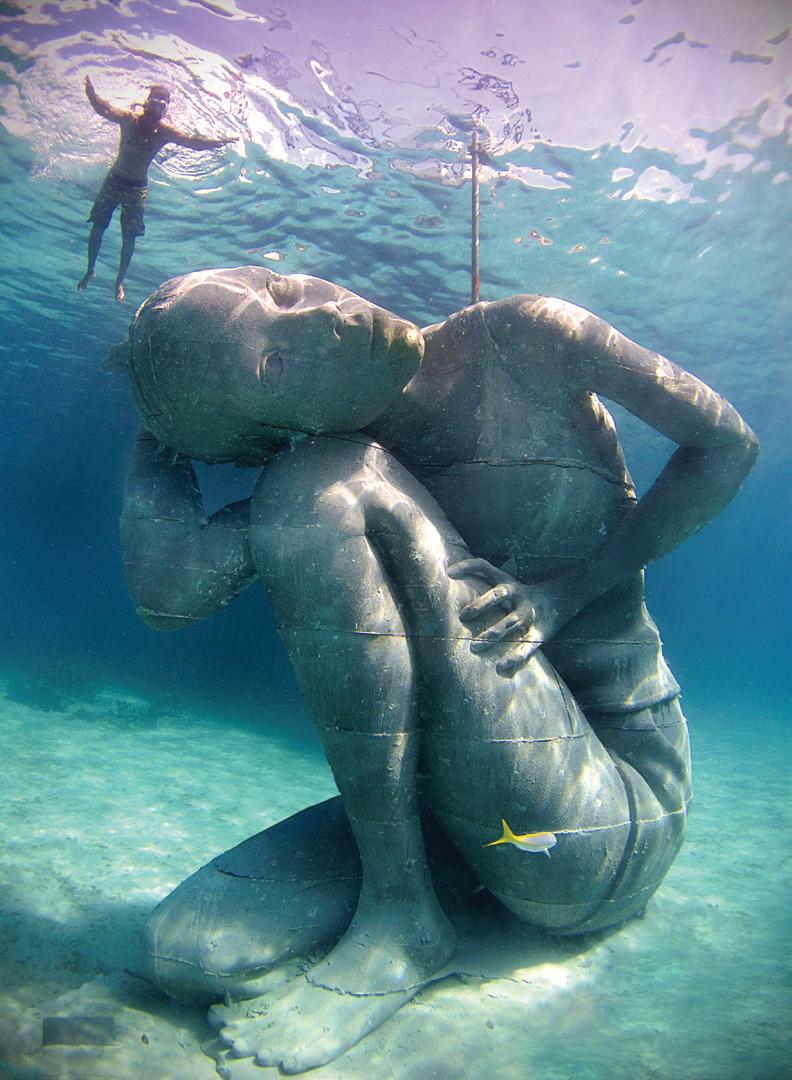
Flippers on, I follow my snorkeling guide Stefano into the warm water. We glide silently over conch shells, an eagle ray or two, hundreds of iridescent fish and a (purposefully) wrecked prop plane from a Bond movie. We’re a few hundred feet from shore when Ocean Atlas comes into view. I take a deep breath and dip underwater. She’s made of a special pH-neutral cement designed to act as an artificial reef to draw marine life (and snorkelers like me) away from overburdened natural reef areas, and her surface has softened with time. Coral is growing on her face, and she looks so serene. I realize I’m not interested in finding the “best” beach after all — like Ocean Atlas, I’m just happy to be here.
Afternoon
In downtown Nassau, I take a seat at Bahamian Cookin’, the first stop on the Bites of Nassau Food Tasting & Cultural Walking Tour from Tru Bahamian Food Tours. The name’s no lie — our guide, the delightful Captain Ron, tells us the family recipes on offer here are 110 years old, courtesy of the restaurant’s original owner Mena Wallace, who passed away in 2021. Our group samples conch all ways — in chowder, as fritters, in a ceviche-style salad, and cracked, which is crispy, deep-fried strips — with sides of peas and rice, fried plantains and mac ’n’ cheese. I wash everything down with a tall glass of Switcha, a local take on limeade that turns the tart up to 10.

The tour continues: There’s gourmet chocolate at historic Graycliff, a round of Bahama Mamas at the Talking Stick Bar and more conch fritters (no complaints here) at Hillside House, a cocktail bar, community space and gallery with a well-curated gift shop featuring scarves and straw fans by local artisans.
Downtown Nassau is a stellar spot for souvenir hunting. Next door to Bahamian Cookin’, Down Home Bahamas offers emerging brands a storefront for their goods, like color-blocked bags made from recycled sailcloth and bright, beautiful clay jewelry. But if you came to haggle, head to the Nassau Straw Market. What it lacks in air conditioning it makes up for in a warehouse of vendors selling straw hats, bags and fans, as well as conch-shell jewelry and wood carvings. I pick up two figurines — a turtle and a cat — for my sons and, after we genially agree on a price, the carver engraves them for me on the spot.
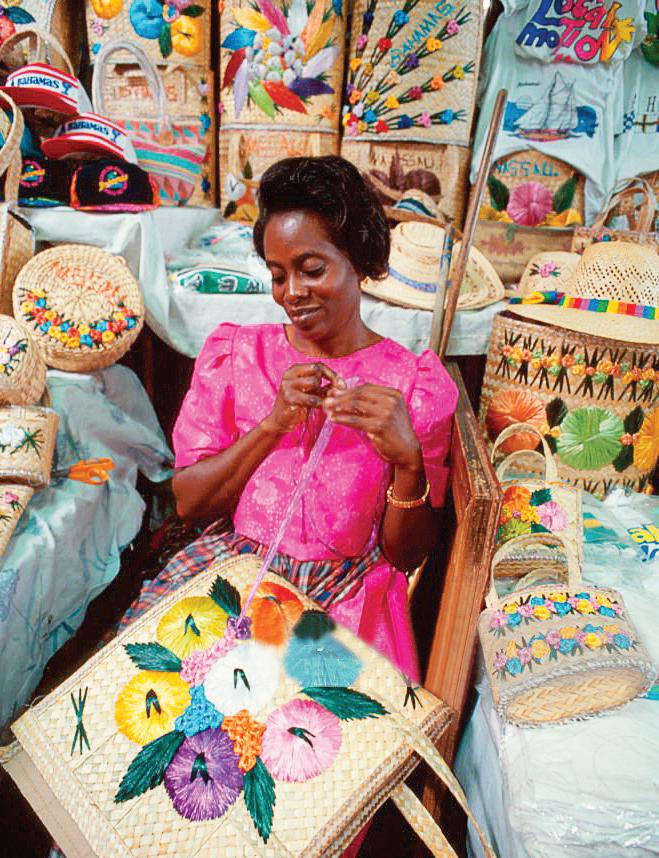
Evening
Taxi driver Romeo Farrington has been ferrying residents and tourists around New Providence since 1965. So, when the octogenarian recommends the Poop Deck for dinner — “they prepare food how we do it in our homes” — who am I to argue?
The West Bay Street outpost of the original Nassau location is on an impeccable stretch of Sandyport Beach. I snag a table on the back patio to enjoy grilled grouper, blackened snapper and conch fritters (my third serving of the day), with the shimmering Atlantic as a backdrop.
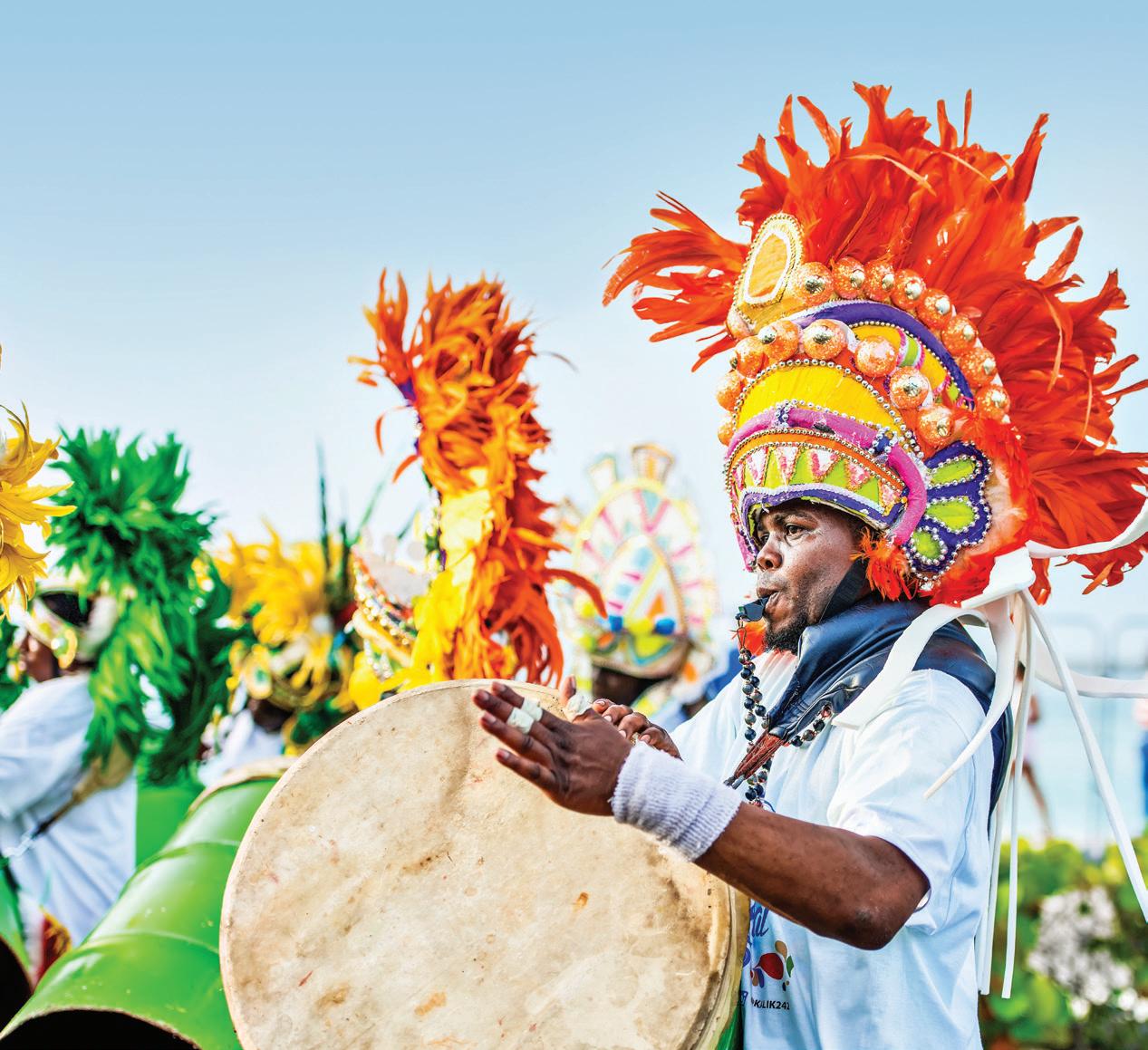
Bon Vivants, the Bahamas’ first craft cocktail bar, opened across the street in 2019. The place drips with texture, from the display of 1960s and ’70s vinyl by local artists to vintage newspaper clippings celebrating Bahamian independence lining the bathroom walls to the hefty leatherbound menu in my lap.
“Everybody deserves a bit of the good life,” says director of hospitality Niko Imbert as he delivers it on a silver platter in the form of a mezcal sour called Shoot the Moon. It’s the best smelling drink — smoky, fruity, floral — I’ve ever had. I take a sip, and it tastes even better.
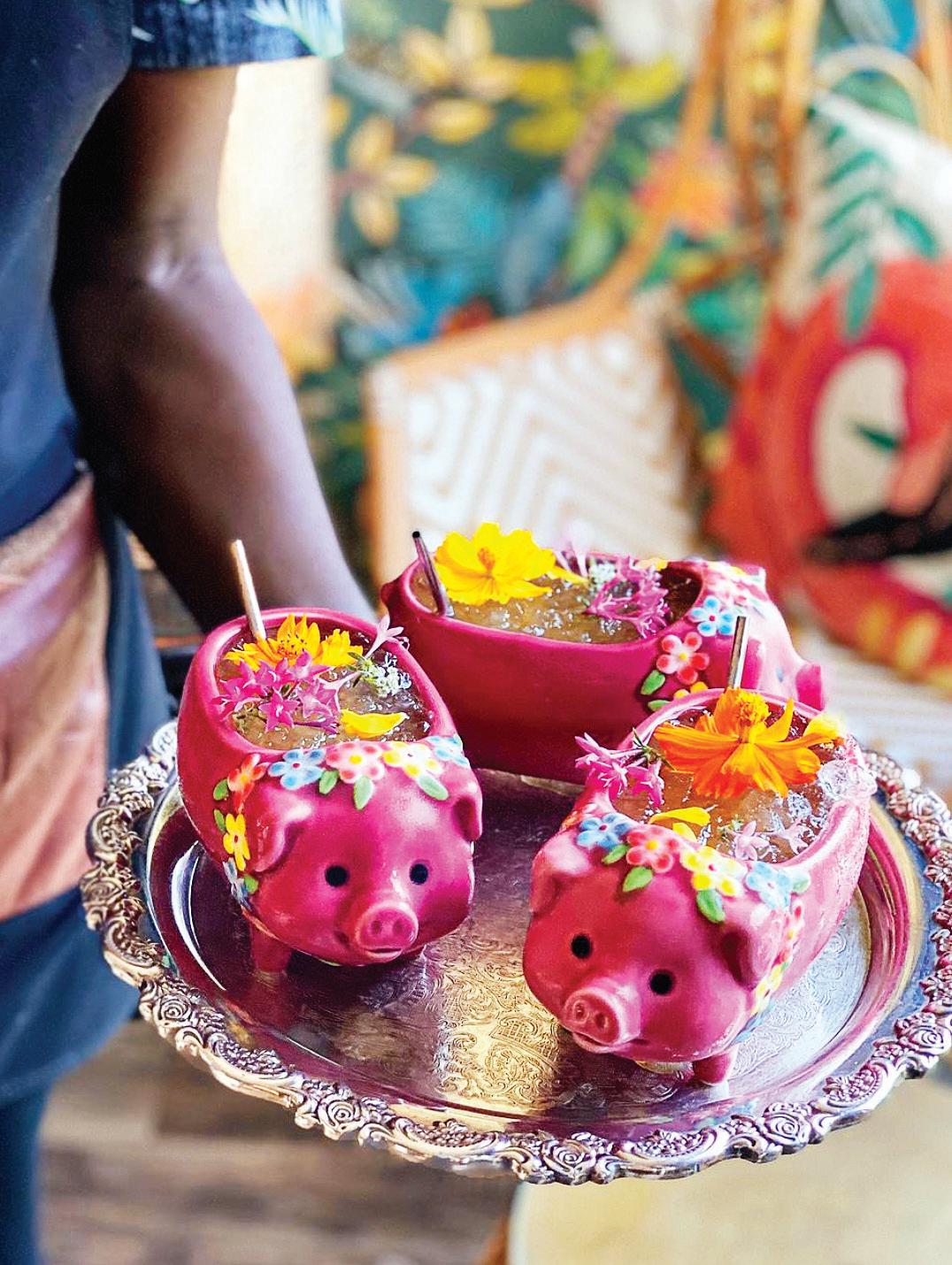
Something I forgot to mention: I’m a “certified official, true true Bahamian Junkanoo.” It’s a designation I received from Arlene Nash Ferguson, the director of Nassau’s Educulture Junkanoo Museum, earlier on my trip. Junkanoo is the Bahamas’ national cultural festival, and it’s held on select dates throughout the year — there’s a festival in August, and many resorts hold mini “rushes” (parades) nightly — though the biggest parties happen on Boxing Day and New Year’s Day. You can also get your fix at Educulture itself, where Nash Ferguson will immerse you in all things Junkanoo — she’s been dancing in the festival since she was four.
I say festival — I mean all-night rager. This party doesn’t get started until 2 a.m. (An espresso martini is perhaps in order.) Junkanoo has been celebrated since the 1800s, when slaves would take to the night in costumes decorated with whatever they had on hand, and dance to the sounds of goatskin drums, cowbells and, of course, conch shells.
That same music washes over me as I watch hundreds of people, Nash Ferguson included, dance their way down Nassau’s Bay Street in elaborate costumes made from imported crepe paper. They weigh up to 70 pounds and work starts in January for next year’s iterations. The “rush” is aptly named: It’s mesmerizing, invigorating and intoxicating. The espresso martini’s long since worn off, but I’m still buzzing as I dance back to my hotel room, conch shells sounding in the distance.

WHERE TO STAY
BAHA MAR
As if Nassau’s sprawling Baha Mar resort complex wasn’t over-the-top enough — nine tennis courts, more than 45 restaurants and lounges, 3,000 feet of pristine beach and one daily flamingo parade — it’s now home to a new $200-million luxury water park that includes the Cyclone Rush, a ride for up to five people that blasts your raft up (and down) a two-story-tall wall.










